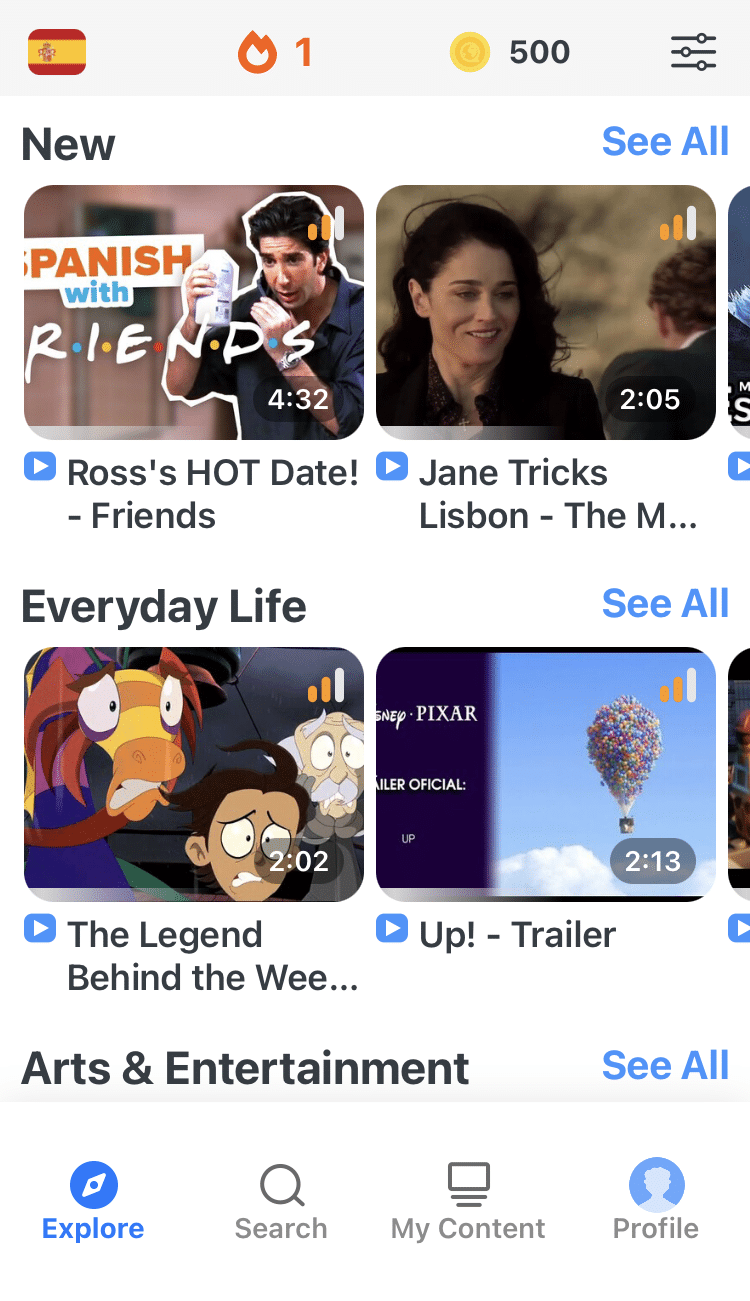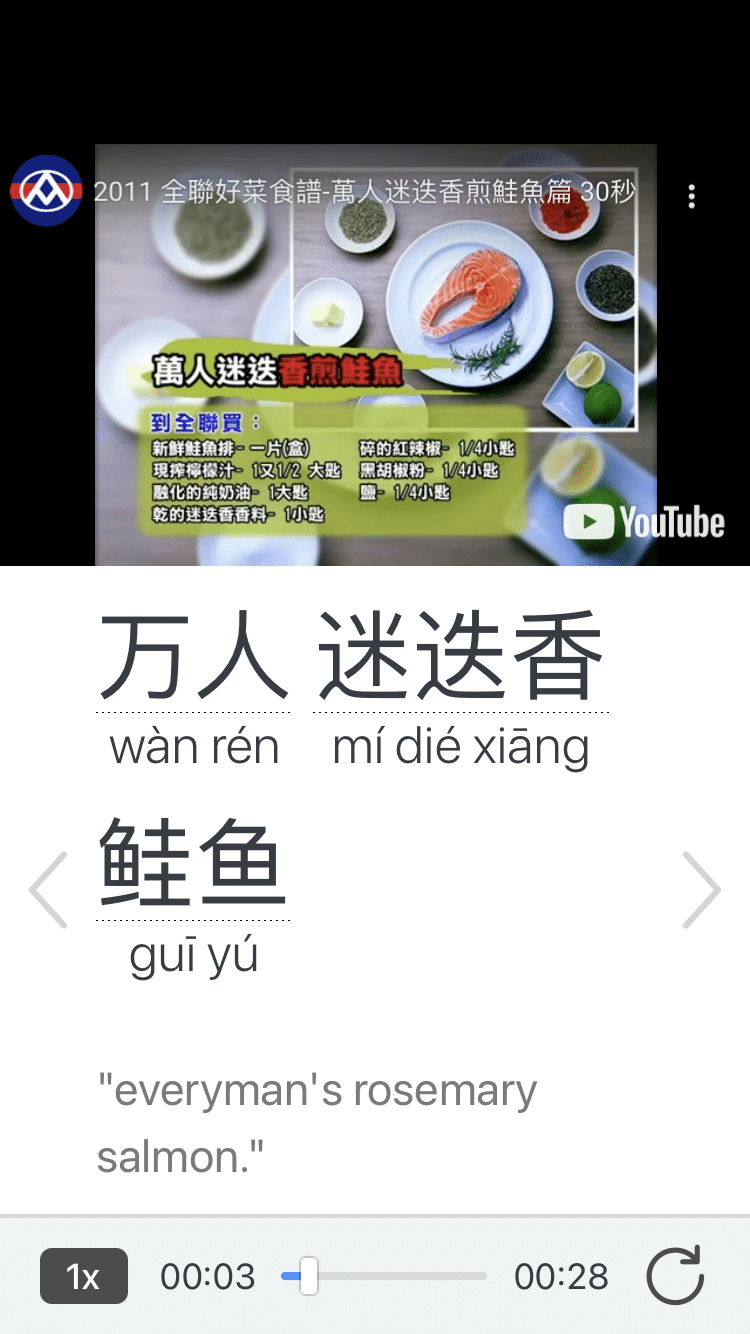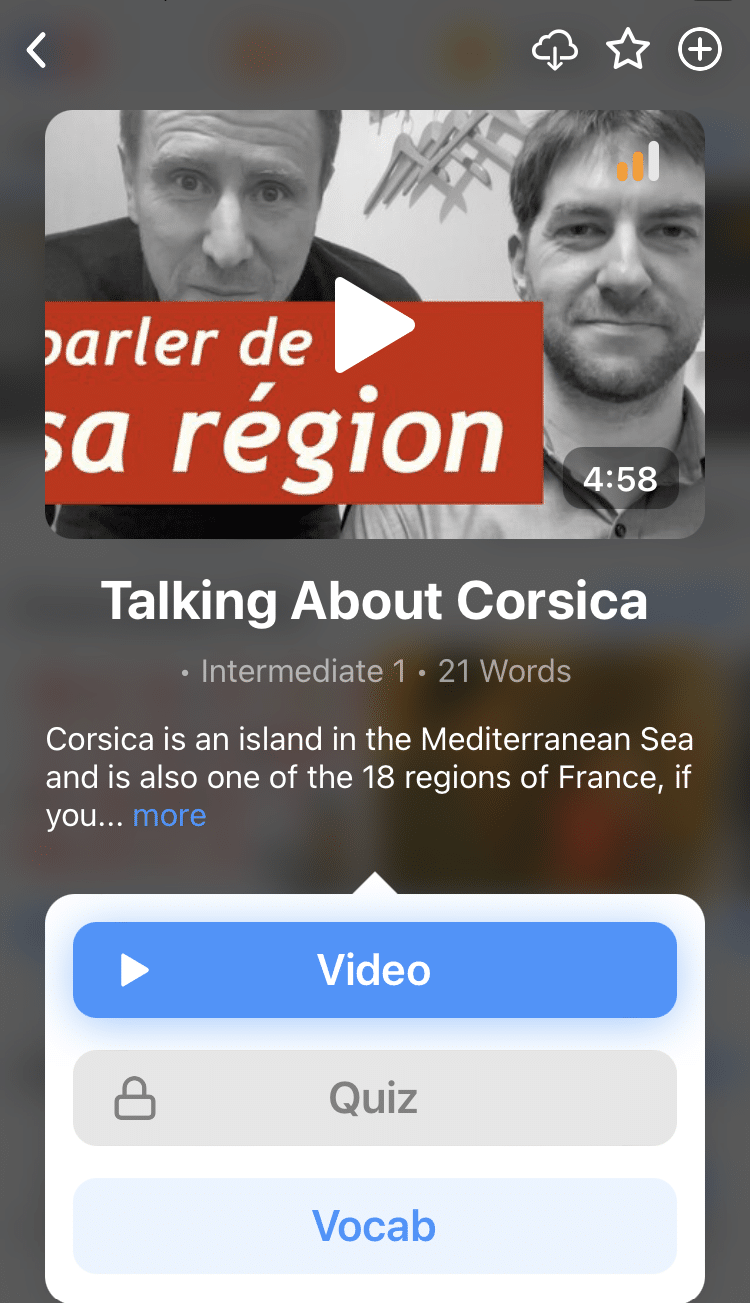
What to Do After Duolingo: 6 Ways to Keep Your Language Study on a Roll
Among language students, Duolingo certainly has a reputation as being one of the cool kids.
Using spaced repetition, Duolingo presents students with material in an organized manner designed to maximize learning while minimizing time and effort.
But there’s just one problem with Duolingo: Eventually, you’ll complete the course you’re working on, and what then?
Don’t worry! In this guide I’ll explain what to do after Duolingo, so that you can keep your language study on a roll and use what you’ve learned so far going forward.
Download: This blog post is available as a convenient and portable PDF that you can take anywhere. Click here to get a copy. (Download)
Contents
- What to Do After Duolingo
- Why Is It Important to Have a Plan for What to Do After Duolingo?
- And One More Thing...
What to Do After Duolingo
1. Keep using Duolingo anyway
Even if you’ve finished a Duolingo course, Duolingo can still help you continue learning. There are two ways you can make this happen.
One way is to go back and redo all the lessons until you earn perfect scores in all areas. Your scores will fade over time, so getting them to all be perfect at the same time will require a lot of time and effort.
Another way to keep using Duolingo to study your target language is to use the “practice” feature on the right-hand side of the page. This feature presents you with familiar Duolingo questions in order to strengthen key words and skills, so it’s a good way to reinforce what Duolingo taught you and to prevent backsliding.
2. Dive into authentic media
Authentic media is one of the best ways to put what you’ve learned from Duolingo into context.
If you want to use your target language in real life, you’ll need to be able to understand much more than one sentence at a time.
You’ll also need to understand your language as it’s actually spoken. Authentic media can help you acquire the necessary skills for this. But don’t worry, you don’t have to dive in with no help.
FluentU takes authentic videos—like music videos, movie trailers, news and inspiring talks—and turns them into personalized language learning lessons.
You can try FluentU for free for 2 weeks. Check out the website or download the iOS app or Android app.
P.S. Click here to take advantage of our current sale! (Expires at the end of this month.)
You can also find limitless authentic material on YouTube. YouTubers speak a huge variety of languages, so it’s easy to find content in your target language.
3. Read real materials in your target language
Most Duolingo texts are quite brief, so if you rely on Duolingo alone, you might not have the skills you need for more in-depth reading.
One way to improve your reading is to read online content in your target language. For instance, you might read a magazine’s website or a news site in your target language. BBC News offers coverage in a delightful array of languages that will suit most language learners.
If that seems too daunting, check out Readlang. Readlang is an excellent tool to transition to reading longer texts in your target language. It allows you to click on words or phrases as you’re reading to get a quick translation. You can even turn the words you look up into flashcards.
Regardless of what content you’re reading and how you’re reading it, pay careful attention to what you’re struggling with. If you notice you’re struggling with a particular rule or theme, go back to the corresponding lesson in Duolingo and do it again.
4. Further research grammar and vocabulary
Duolingo can’t possibly cover everything about your target language, so to continue your education past Duolingo, try researching key areas that Duolingo didn’t cover as much.
For instance, what grammar rules were barely touched on that you could stand to learn in more depth? What specialized terminology could you learn? For instance, would you like to learn more regional slang? Would some business vocabulary broaden your horizons?
There are resources available that can help you with virtually any content. All you need to do is find the weak points you want to work on.
If you want to work on slang, there are plenty of slang dictionaries out there.
If you want to work more on grammar, you might try a handy language textbook, like one of many offered by Barron’s.
5. Connect with others in the Duolingo forums
The Duolingo forums may be your go-to destination when you have questions about the material you’ve learned on Duolingo, but can they help you keep learning when you’ve completed a Duolingo course? Absolutely!
One way to keep learning your target language through the Duolingo forums is to find native speakers of your target language. People around the world use Duolingo, so you might be able to find a speaker of your target language in the forums who would gladly help you practice your target language in exchange for some help with your native language.
This language exchange can give you valuable reading, writing, speaking and/or listening practice, depending on your preferences. Plus, making a friend who speaks your target language can increase your motivation to improve your language skills.
Another option for using Duolingo forums to continue learning is to connect with other alumni of your language course. Every day, more students are completing Duolingo courses and are probably in the exact same spot you are, wondering what to do next.
If you connect with these students in the forums, you can work together to find the best course of action to continue studying your target language.
6. Try a more conventional course
Since Duolingo has given you the foundation you need to approach studying your target language confidently, you might now try taking a more conventional course (or even an intensive language program, if you really want to dive in).
Conventional courses can help you understand the underlying rules of the language in more depth while reinforcing your skills and filling in any missing material.
Oregon State University is one terrific source for courses that are offered online. Through OSU, language learners can study American Sign Language, Chinese, French, German, Italian, Japanese, Korean and Spanish.
If one of your favorite features of Duolingo is its affordability, you might like MIT OpenCourseware. MIT OpenCourseware offers free online course materials to help students study an array of languages and language-related topics. Languages offered include Chinese, French, German, Japanese, Portuguese and Spanish.
Why Is It Important to Have a Plan for What to Do After Duolingo?
First of all, you’ll want to have a plan for what to do after Duolingo because without the structure of the lessons, your skills might fade.
Duolingo courses offer a clear structure that allows you to study for as little as five minutes a day. This structure is important in that it encourages consistent studying, which you might miss once your course is over. And without this structure, your skills could fade, so you need to figure out some way to prevent this.
Plus, without additional study past Duolingo, you won’t progress any further. Duolingo is terrific, but it has its limits. If you stop studying after you complete a Duolingo course, you’ll miss out on valuable grammar, vocabulary and listening practice, and your skills won’t progress past the level Duolingo left you at.
Without a clear course of action for what to do after Duolingo, it might be too easy to quit studying altogether. The only surefire way to never become fluent in your target language is to quit studying. And without Duolingo’s fun, game-ified learning to keep you focused, this could definitely happen if you don’t have a plan in place. So be sure to have other language learning apps, programs and other resources in line after Duolingo.
Using the above methods, you’ll be set for continuing your language studies beyond Duolingo!
Download: This blog post is available as a convenient and portable PDF that you can take anywhere. Click here to get a copy. (Download)
And One More Thing...
If you dig the idea of learning on your own time from the comfort of your smart device with real-life authentic language content, you'll love using FluentU.
With FluentU, you'll learn real languages—as they're spoken by native speakers. FluentU has a wide variety of videos as you can see here:
FluentU has interactive captions that let you tap on any word to see an image, definition, audio and useful examples. Now native language content is within reach with interactive transcripts.
Didn't catch something? Go back and listen again. Missed a word? Hover your mouse over the subtitles to instantly view definitions.
You can learn all the vocabulary in any video with FluentU's "learn mode." Swipe left or right to see more examples for the word you’re learning.
And FluentU always keeps track of vocabulary that you’re learning. It gives you extra practice with difficult words—and reminds you when it’s time to review what you’ve learned. You get a truly personalized experience.
Start using the FluentU website on your computer or tablet or, better yet, download the FluentU app from the iTunes or Google Play store. Click here to take advantage of our current sale! (Expires at the end of this month.)










